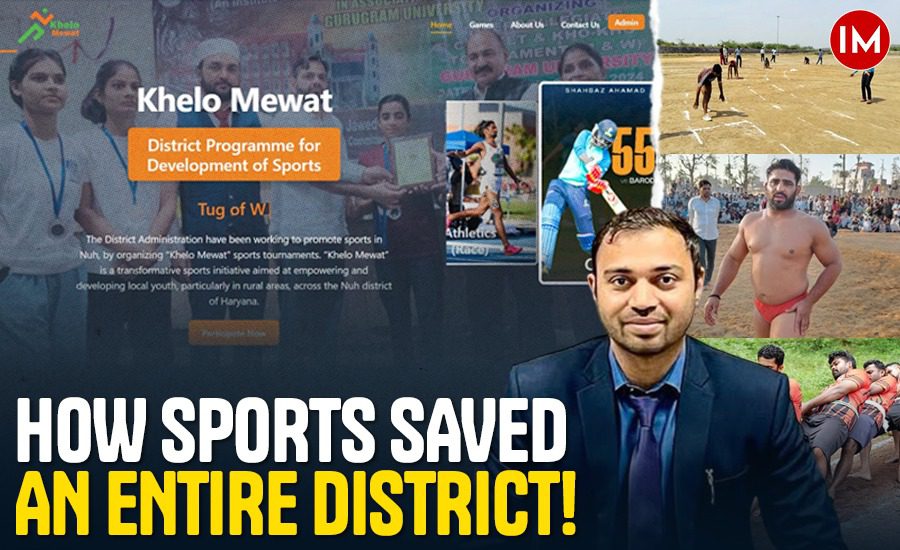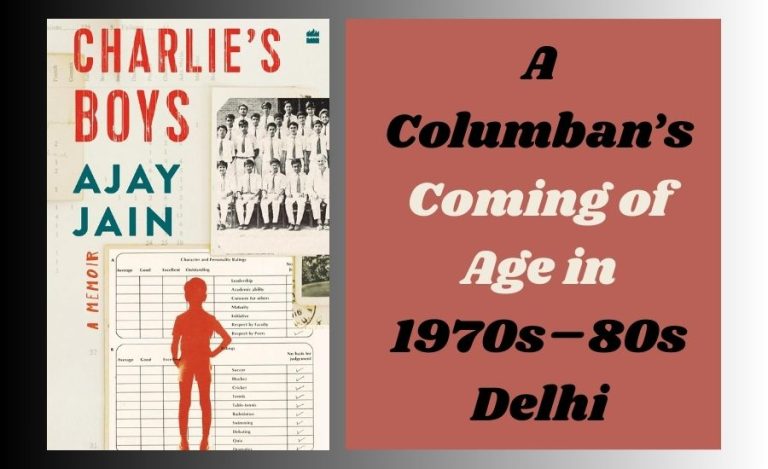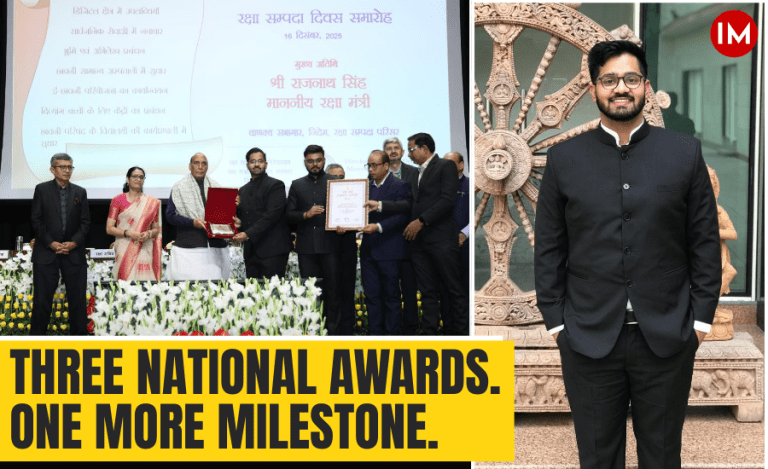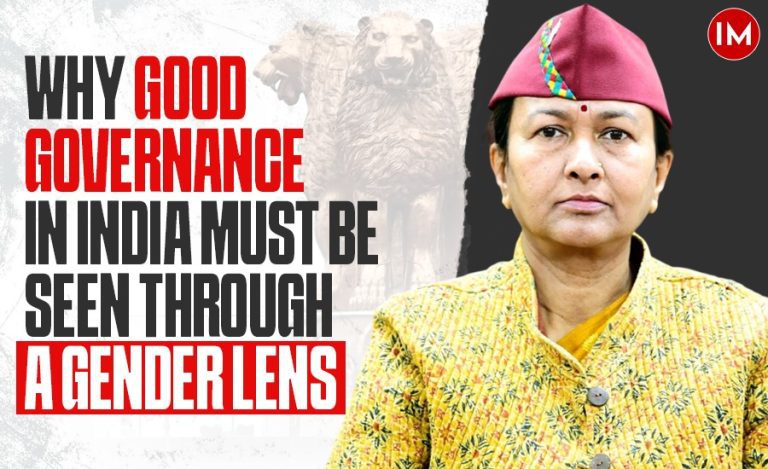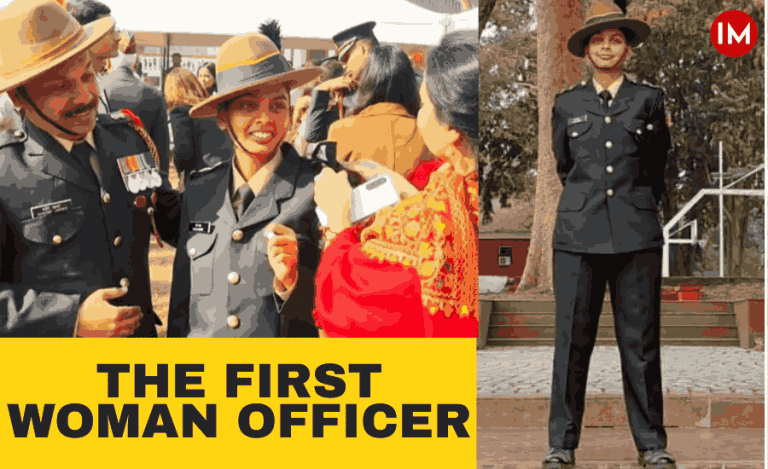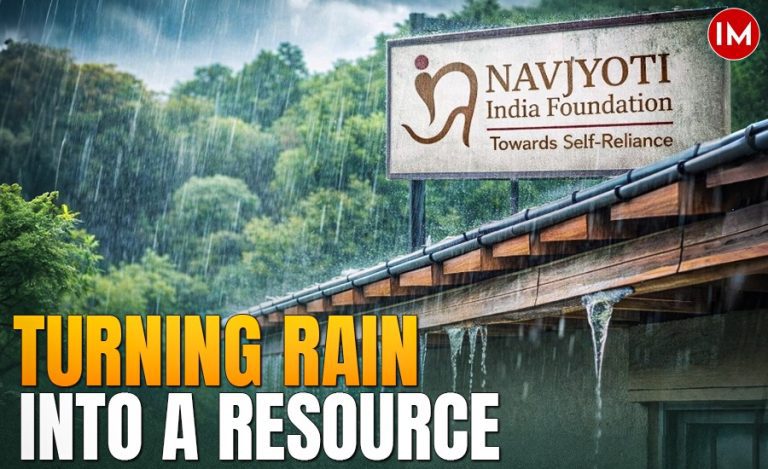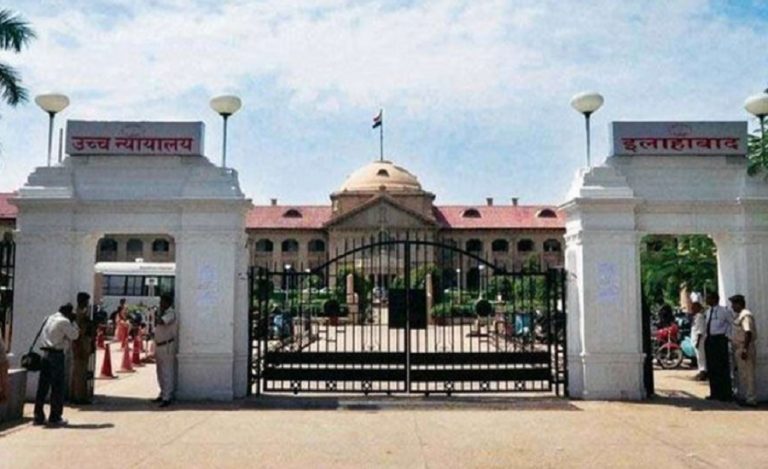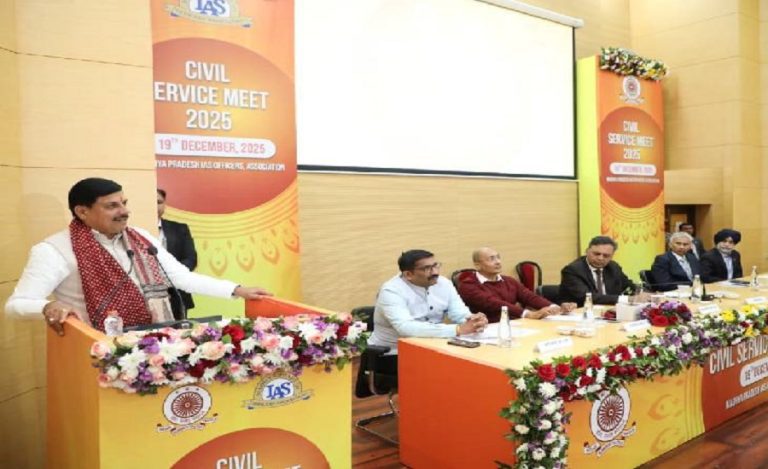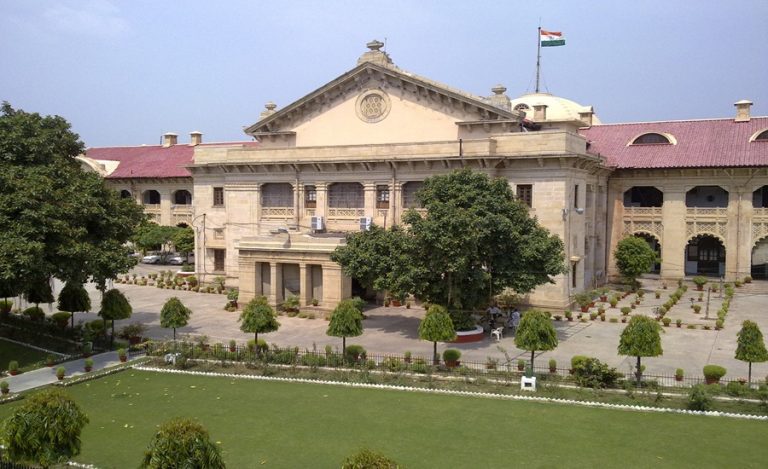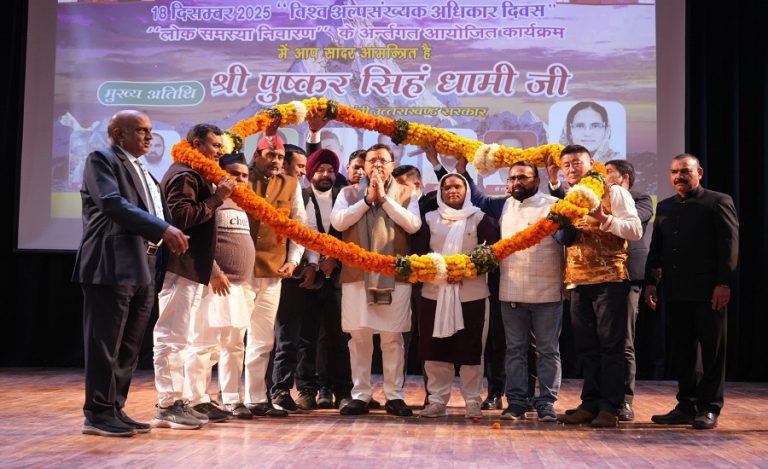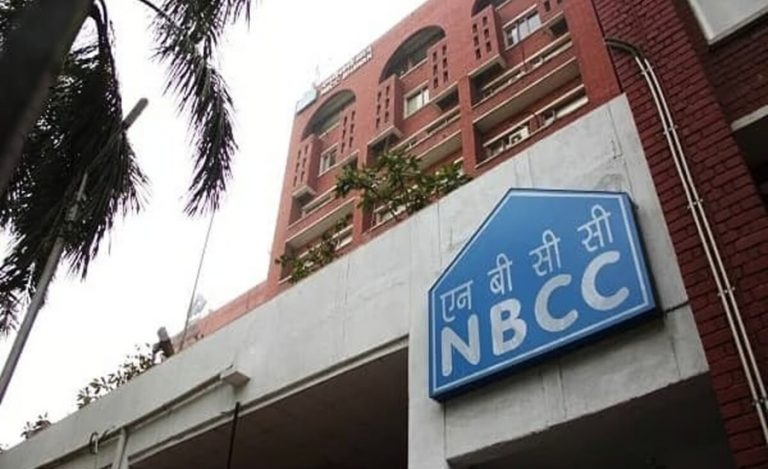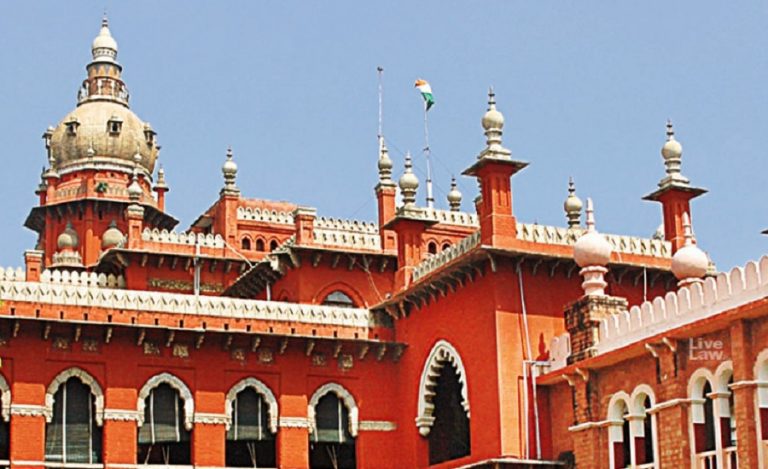Once infamous for its rising graph of drug abuse and cybercrime, Haryana’s Nuh district – earlier known as Mewat – has today emerged as a symbol of hope and transformation. Where once disillusioned youth turned to crime and substance abuse, playgrounds and stadiums now echo with the cheers of thousands of players and spectators.
This remarkable turnaround stems from one powerful idea – channel youth energy through sports.
Even the NITI Aayog has recognized Nuh’s sports-driven development model, calling it a “best practice” presentation that could be replicated across India. The initiative, aptly titled “Khelo Mewat”, has redefined community engagement and created pathways for employment in the Army, police, and Railways – through sheer sporting excellence.
Indian Masterminds interacted with Pradeep Singh, 2020-batch IAS officer and Additional Deputy Commissioner of Nuh, and Ayush Yadav, 2022-batch IPS officer and ASP, Nuh, to understand the “Khelo Mewat” initiative – its implementation, impact on youth, and the positive social transformation it has brought to the district.
The Genesis of a Movement
The idea took root under the leadership of IAS Pradeep Singh. Speaking to us, he recalled the thought process behind the initiative:
“We had been working on education first, but we realized that the dropout rate was very high and children who left school had no direction. They needed a constructive outlet for their energy,” he said.
“So, we designed a model focusing solely on sports – accessible, inclusive, and participatory.”
After months of groundwork, “Khelo Mewat” was formally inaugurated on April 9, 2025. The initiative, however, had been in development since the previous year. Mr Singh and his team designed a structure that encouraged maximum participation without any technical or entry barriers.
“We chose games that everyone in the village could play,” he explained. “Cricket, volleyball, tug of war, athletics, and wrestling – five sports that connect deeply with local culture.”
Games for Every Village
To ensure fair play and equal opportunity, the administration decided that entries would come from village panchayats rather than open teams.
“If we kept it open, the best players would form super teams,” Mr Singh said. “But we wanted every village to form its own team – even if only two players were good, they’d inspire ten others to join.”
The tournament was conducted in two phases – first at the block level and then at the district level. Nuh has seven blocks, each with around 45 villages.
“At the block level, local matches attracted crowds of two to three thousand people. For many, it was the first time they had witnessed such excitement for village sports,” Singh recalled.
The prize structure was equally inspiring. Winners at the block level received cash awards – ₹1.51 lakh for first place, ₹1 lakh for second, and ₹51,000 for third. The village that won the highest overall points across sports was declared the “Champion Village”, earning a grant of ₹5 lakh to develop local sports infrastructure – whether it be a volleyball court, a wrestling arena, or a mini-stadium.
Building the Infrastructure, Brick by Brick
When the initiative started, Nuh lacked even basic sports infrastructure. Within months, under Pradeep Singh’s supervision, the administration built 37 new volleyball grounds, taking the total to 78, and constructed three large cricket stadiums with proper grassing and maintenance.
“We developed most of this within five to six months,” Mr Singh said proudly. “Playgrounds were created in school compounds and on panchayat land so that sports became part of daily life.”
The local enthusiasm was overwhelming. During matches, over one lakh people participated directly and indirectly – players, villagers, and supporters. Each event became a festival of community spirit, and the administration used these gatherings to deliver social messages about drug abuse, women’s empowerment, health, and education.
“The audiences were mostly youth,” said Mr Singh. “So we used the opportunity to spread awareness on key issues while building trust with the community.”
From Sports Fields to State-Level Recognition
The transformation didn’t stop at the district boundaries. The impact of “Khelo Mewat” soon reflected in Haryana’s annual Sports Month rankings.
“Earlier, Nuh was always ranked last or second-last,” Mr Singh noted with a smile. “This year, we ranked third across the state.”
The recognition didn’t end there. When the NITI Aayog organized a Best Practices Seminar, Nuh’s model was showcased as one of the country’s most effective grassroots sports interventions. Pradeep Singh himself presented the model before national officials.
He added, “This is a model that can be implemented anywhere. The idea is simple – make sports accessible, community-driven, and culturally relevant.”
The results speak for themselves. One young athlete from Nuh’s sports nursery won a gold medal in weightlifting at the Commonwealth Youth Games in Gujarat, where participants from over 90 countries competed. For a district once known for cybercrime, this victory marked a historic shift in identity.
The Police Partnership: Turning Crime into Confidence
Talking about the impact of the initiative, IPS Ayush Yadav, who joined Nuh recently, said that it is effectively aligning the sports drive with community policing.
“We wanted to bridge the gap between the administration, the police, and the youth,” he explained. “Nuh had been known as a cybercrime hub, so we began engaging youngsters through sports and social media to connect with them directly.”
Under police guidance, Special Police Officers (SPOs) – mostly retired army personnel – were mobilized to mentor youth in villages with high drug or crime rates.
“Instead of sitting idle, these youngsters now participate in physical activities like cricket and volleyball even late at night,” Yadav added. “You can drive through Nuh at 3 a.m. and still find youth playing under floodlights.”
The impact has been tangible.
“Earlier, about 70–80% of Haryana’s daily cybercrime complaints came from Nuh,” Mr Yadav revealed. “Today, that number has dropped to around 40%. Even overall state-level complaints have halved. Sports has played a big part in that change.”
Transforming Lives and Futures
Beyond reducing crime, “Khelo Mewat” has opened new career opportunities for youth. Many are now preparing for sports quota recruitments in government sectors. Haryana’s policy reserves 3% of Group C and D jobs for national-level athletes – an incentive that has inspired hundreds.
“Sports can now become a livelihood,” Mr Singh emphasized. “Some are planning to open their own academies, others are training to become coaches. This is how you create a self-sustaining ecosystem.”
Parents, too, are noticing the difference.
“They tell us, ‘Earlier my son came home drunk, now he picks up his kit every evening and heads to the stadium,’” Mr Singh shared emotionally. “That satisfaction – that we could bring this change – is what drives us.”
A Model for the Nation
In just one year, “Khelo Mewat” has achieved what decades of policing and awareness campaigns struggled to do – it changed mindsets. The initiative has turned potential offenders into athletes, restored community pride, and given Nuh’s youth a reason to dream again.
As IAS Pradeep Singh summed it up:
“The children here always had the talent; they just needed time, space, and purpose. We provided the platform, and they did the rest.”
From cybercrime to cricket, from despair to discipline – Nuh’s story is proof that sports can indeed be the most powerful form of social reform.

